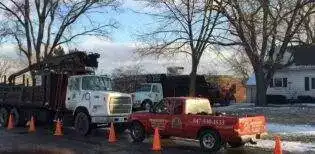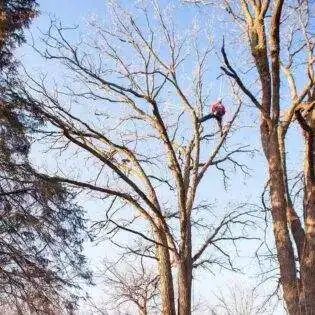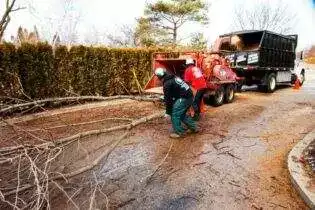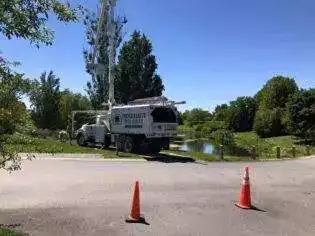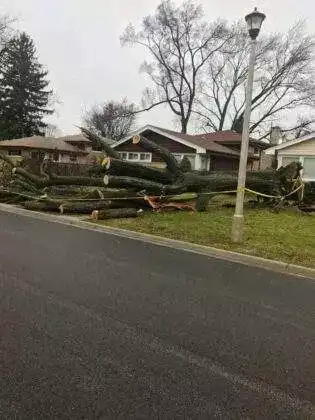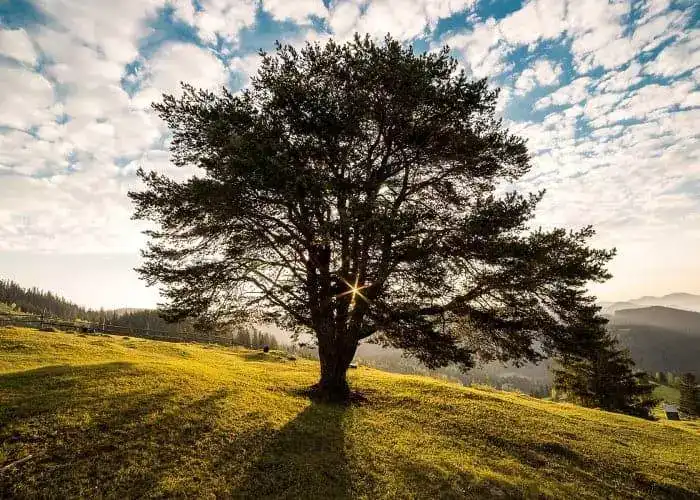When does a tree need additional support?
Trees can grow in such a manner that it may become difficult for them to support their own weight, and that is when you should consider a tree cabling and bracing system.
When failure of the trunk or a large branch occurs, many things can result because of it, including property damage, personal injury, or the decline of a tree’s health. When a tree has a structural defect or a condition that presents a high risk to the safety of people, homes, and other surrounding objects, a supplemental support system can often reduce the risk. Tree support systems are used to provide supplemental support to branches by limiting movement and cabling and bracing are the two most common forms of structural support for trees. The installation of cables and bracing rods, along with pruning to reduce end-weight, can reduce the likelihood of a structural failure. Properly installed bracing rods can provide support to branches that are deemed weak while cables help to redistribute structural stress. In other instances, a combination of bracing and cabling can easily assist splitting limbs and trunks to help the tree itself become more stable and strong.
As a tree grows, the angles that are produced among the limbs help to determine the structural reliability of the tree itself. Branches having a wide “U” angle of attachment will be stronger than branches that have a narrow “V” shape. When a tree is young, the stress that is applied on a narrow angle of attachment is typically minimal and does not have much effect on the integrity of the branch. However, as the tree matures the weight of the canopy and the additional load created by winds, snow, or wet foliage may be more than the branch or attachment can support. Properly placed cables can help redistribute the load allowing limbs to support each other, rather than moving independently.
Mature trees having a large canopy with a large surface area, such as Oaks, often have lower limbs that grow horizontally to the edge of the canopy. These limbs often hang lower due to their weight and any additional growth that may have occurred over time. In these instances these limbs can be cabled to maintain a specific height or to provide clearance above a walkway, driveway, or roof. By opting to cable these low-hanging branches it will eliminate the need of removing the branches all together, which also helps to keep the healthy and lush appearance of the tree.
Signs That A Tree Needs Cables And Braces
Split Trees
Trees with trunks that have narrow angles of branch attachments may develop vertical splits. These cracks can often occur due to structural stress or storm damage. When these splits are discovered immediate attention will be needed to prevent complete failure. In this instance, Progressive Tree Service we will be able to advise you as to whether the tree should be removed completely or if cabling and bracing is a better alternative for you. If the cabling and bracing turns out to be an option, pruning, the installation of cables, and the proper placement of bracing rods can add years to the life of a damaged tree without affecting its lush appearance.
Multi-Trunked Trees Need Extra Support
Multi-trunked trees are more likely to fail than a single-trunked tree. This is due to each trunk competing for canopy space as they grow. As the limbs and foliage grow away from the center of their respective trunks, the weight loads begin to distribute to the side that provides more growing space, thus making each individual trunk less centrally stable. This factor, plus the competition for root space, results in the failure of multi-trunked trees at a rate greater than trees with single trunks. Failure of any singular trunk can create a wound at the collective base that heals slowly, creating a site for opportunistic insects and diseases. Cabling multi-trunked trees can substantially reduce the likelihood of structural failure.
To get a detailed tree inspection and a clear explanation on why or why not you need tree cabling and bracing, contact Progressive Tree Service for a free quote.
